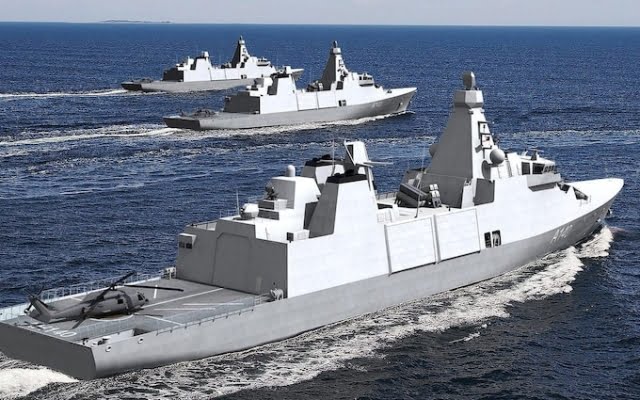 Babcock won the contract to build Type 31 frigates for the Royal Navy in 2019. partly produced in Poland, despite a promise from ministers that the project will lead to a renaissance in British shipbuilding.
Babcock won the contract to build Type 31 frigates for the Royal Navy in 2019. partly produced in Poland, despite a promise from ministers that the project will lead to a renaissance in British shipbuilding.
Polish shipyards build hull blocks for the Type 31 frigate, and final assembly is then carried out at defense contractor Babcock's shipyard in Rosyth, to the north from Edinburgh.
Babcock sources insist on this. that Poland was only responsible for a «very small» percentage of the work at a cost to help Warsaw prepare to build similar ships on its own.
However, the deal is likely to raise questions from the government& #39;s plans to put the Type 31 at the center of a resurgent British shipbuilding industry.
When a competition for the construction of frigates was announced in 2017 as part of the country's National Shipbuilding Strategy, the then Minister Defense Sir Michael Fallon called it «a huge opportunity». for yards that would help create a "renaissance". He added: «We have to get back to making things.»
Admiral Lord West, former First Sea Lord and Chief of Staff of the Navy, said: “It just seems incredible. because we want to do as much as we can in this country and we need to develop our industry.
“I think we need to develop our shipbuilding industry and that was one of the things they said in shipbuilding strategy.
«It needs a lot of orders and a lot of building work, and it's useless building work done elsewhere.»
It is not clear how much welding and construction work was assigned to Poland, a NATO member. Much of the value of a warship lies in its weapons systems, radars and other sensors, engines and control equipment, meaning that the amount of work can be significant even if the value is small.
Babcock won a contract to build five Type 31 frigates for the Royal Navy in 2019 with a base production cost of £250m apiece. The ships have been billed as cheaper and more versatile than other new British frigates, the Type 26, which will hunt submarines, and cost £840m each.
The disclosure of Poland's involvement follows the winner of the past 2009 by the proposal of the Spanish shipbuilding company Navantia to build support ships for the aircraft carrier of the Royal Navy. Much of this work is sent to Spain, raising concerns that British shipyards are losing out.
The government is insisting that at least half of the work on the £1.5bn support vessel deal will be completed. In Great Britain.
Last year, Babcock beat the German Thyssenkrupp to win a £1.4bn contract to build three frigates for the Polish Navy called Miecznik, which means Swordfish.
The ships will be built at Polish shipyards according to Babcock's design. They will be equipped with military equipment from Thales and air defense systems from the missile manufacturer MBDA, partly owned by the British BAE Systems.
PGZ, the Polish defense company overseeing the project, said at the time that the purchase would significantly increase the capabilities of the Polish Navy.< /p>
While testifying before the Parliamentary Defense Committee in January, Vice Admiral Paul Marshall, who oversees the purchase of the Type 31 for the government, insisted that construction was on schedule and there were no «current problems».
He added: “As with any complex shipbuilding program, we still have some difficult elements to figure out.”
Naval shipbuilding policy has undergone a number of changes in recent years, thanks to the National Shipbuilding Strategy, by the author which industrialist Sir John Parker is proposing to outsource work to more shipyards in the UK to break the dominance of BAE Systems.
He called for a «regular drumbeat» of work to keep the shipyards running.
A Department of Defense spokesman said: «Assembly and integration of all Type 31 warships will take place at Rosyth, and it is normal practice to source warship components from the global supply chain.»
< p>«We understand that Babcock has contracted with PGZ Poland to build blocks for HMS Active, type 2 31.
«This represents less than 1% of the total program build cost and is part of Babcock's goal of maximizing knowledge sharing to bring benefit both the British Type 31 frigate and the Polish Miecznik frigate.»






















































Свежие комментарии